Popular Styles of Jewelry Boxes
Uncover the rich history of jewelry boxes. Explore popular styles, from minimalist to luxury, and discover modern trends in materials and customization.
Summary
Jewelry boxes have evolved significantly over centuries, serving as both functional storage solutions and artistic expressions of personal style. Originating in ancient civilizations, these boxes were crafted from materials such as wood, metal, and bone, designed to protect precious items and reflect the status of their owners. As societies progressed through historical periods, including the medieval era and the Renaissance, jewelry boxes became more elaborate, often reserved for royalty and the affluent, which highlighted their cultural and economic significance.
In the 18th and 19th centuries, the Industrial Revolution democratized access to decorative items, leading to the emergence of various styles, such as Rococo and Victorian designs, which featured luxurious materials and intricate craftsmanship. The Victorian Era, in particular, influenced jewelry box design with the rise of mourning jewelry and specialized boxes to house these sentimental items. As art movements like Art Nouveau and Art Deco took shape in the late 19th and early 20th centuries, jewelry boxes began to reflect modern aesthetics and innovative design philosophies, allowing for greater customization and unique creations.
Today, popular styles of jewelry boxes range from minimalist designs that emphasize simplicity to luxurious packaging that conveys sophistication and opulence. The Y2K aesthetic also plays a role in current trends, showcasing vibrant colors and playful themes reminiscent of early 2000s fashion. Moreover, contemporary designs increasingly focus on functionality and sensory appeal, incorporating textured materials that enhance the user experience and elevate the aesthetic value of the jewelry box. As the market evolves, sustainability and personalization remain key considerations, with brands exploring eco-friendly materials and customizable features to engage consumers and meet their preferences.
The ongoing innovation in jewelry box design reflects broader cultural shifts and consumer values, making these items not just containers for jewelry but significant artifacts that embody personal stories, craftsmanship, and artistic expression. As technology continues to influence design, the future promises further integration of advanced features, ensuring that jewelry boxes remain relevant in an ever-changing landscape.
Table of Contents
Historical Overview
Jewelry boxes have a rich history that dates back to ancient civilizations, where they were primarily used to store and protect precious items. The earliest evidence of jewelry boxes is found in ancient Egypt, Mesopotamia, and China, where they were crafted from materials such as wood, bone, or metal, often featuring intricate designs and craftsmanship to reflect the societal status of their owners.
Ancient to Medieval Periods
During the medieval and Renaissance periods, the design of jewelry boxes evolved significantly. These boxes became more ornate and elaborate, often handcrafted from wood and embellished with intricate carvings and inlays. They were generally reserved for royalty and the upper classes, signifying wealth and status. The artistry of these boxes was a testament to the craftsmanship of the era, showcasing both functional and decorative qualities.
The Rise of Accessibility in the 18th and 19th Centuries
The 18th and 19th centuries marked a shift in jewelry box accessibility, thanks in part to advancements in craftsmanship and design. Various styles emerged, including Rococo, Baroque, and Victorian, each characterized by distinctive artistic influences. Many jewelry boxes from this era featured velvet-lined interiors to protect delicate jewelry, making them popular among the burgeoning middle class, particularly during the Industrial Revolution when decorative items became more widely available.
The Victorian Era and Its Influence
The Victorian Era (1837-1901) had a profound impact on jewelry box design. Under the reign of Queen Victoria, mourning jewelry became a popular trend following her personal losses, leading to the production of specialized mourning jewelry boxes made from black gems like Whitby Jet and Onyx. This period saw a flourishing of creativity and innovation, with artisans experimenting with new materials and styles, influenced by both historical and archaeological discoveries.
The Art Movements of the 20th Century
The late 19th and early 20th centuries brought about the Art Nouveau and Art Deco movements, which further influenced jewelry box design. Art Nouveau jewelry boxes featured flowing lines and natural motifs, while Art Deco favored bold geometric shapes and streamlined aesthetics. These movements marked a departure from traditional styles, paving the way for increasingly customized and unique designs.
Modern Era Innovations
In contemporary times, the art of custom-made jewelry boxes has reached new heights, with technology and materials allowing for precision-engineered pieces tailored to individual preferences. Modern artisans explore a wide range of materials, including eco-friendly alternatives, creating innovative designs that push the boundaries of creativity and sustainability. Today, jewelry boxes serve not only as functional storage solutions but also as artistic expressions that reflect personal style and heritage.
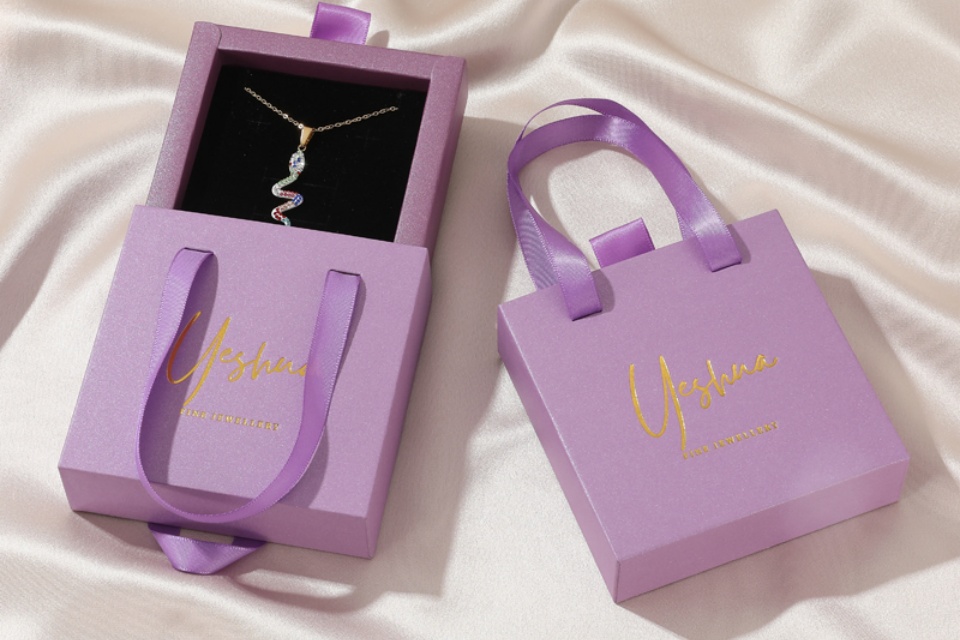
Popular Styles
Minimalist Jewelry Packaging
Minimalist jewelry packaging is characterized by its simplicity and clean lines, often embodying the “less is more” philosophy. This style can range from basic cardstock holders for small items, like earrings, to solid-colored boxes with minimal branding. A defining feature is the use of one or two colors, often accompanied by subtle imagery, such as an embossed brand logo. The texture of minimalist packaging plays a crucial role in creating visual interest and enhancing the tactile experience, allowing for a more luxurious presentation of the jewelry inside.
Y2K Aesthetic
Another popular style in jewelry packaging is inspired by the Y2K aesthetic, which reflects the trends of the early 2000s. This nostalgic approach uses bright colors, intergalactic themes, and cyberspace motifs to evoke a sense of excitement and futurism from that era. The Y2K style often incorporates gradients and vibrant palettes, appealing to consumers looking for a unique and playful presentation of jewelry.
Luxury Jewelry Packaging
Luxury jewelry packaging emphasizes high-quality materials and intricate designs that convey opulence and sophistication. This style may include decorative elements such as ornate patterns, deep colors, and premium materials like leather or embossed textures. Luxury packaging not only serves the purpose of protecting jewelry but also enhances its visual appeal and perceived value. Designers often integrate cultural motifs and artistic elements into luxury packaging, transforming the jewelry box into a work of art.
Functional and Thematic Designs
Functional designs focus on practicality while incorporating enchanting aesthetics. Popular options include musical ballerina boxes that play tunes while featuring spinning figures, which are particularly appealing to younger audiences. Other thematic designs draw inspiration from nature or whimsical elements, such as floral patterns or animal shapes, often enhanced with glitter or rhinestones. For those who favor a minimalist approach, sleek velvet or leather boxes with multiple compartments remain highly sought after.
Textured and Sensory Elements
Emerging trends in jewelry packaging emphasize the incorporation of textured surfaces and sculpted designs. Materials such as embossed leather or ceramic add a tactile dimension that enhances the unboxing experience. This focus on sensory appeal makes jewelry boxes not only functional but also memorable, reflecting craftsmanship and uniqueness. In 2025, the emphasis on minimalist design will continue to evolve, prioritizing sustainable materials and user experience while maintaining elegance.
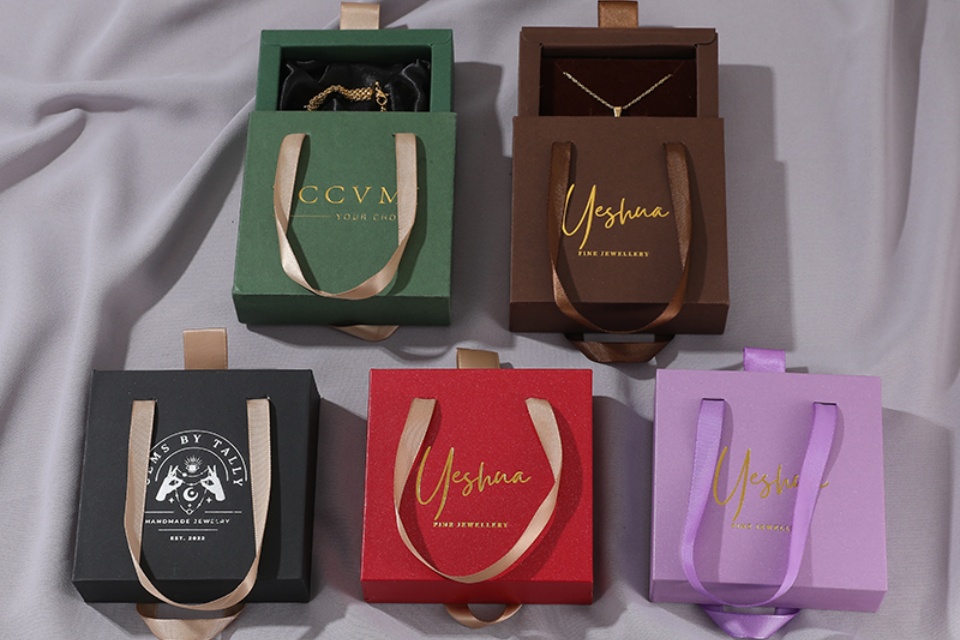
Functional Aspects
Jewelry boxes serve multiple essential functions that enhance the user experience while ensuring the protection of valuable items.
Protection and Durability
The primary role of a jewelry box is to safeguard jewelry from damage. Different materials used in jewelry boxes provide varying levels of protection; for example, hard materials like wood or metal are effective against crushing, while softer materials like velvet help prevent scratches. As jewelry items often hold significant sentimental and monetary value, the choice of materials also plays a crucial role in durability. Innovations in design have led to the development of boxes made from tamper-resistant materials such as carbon fiber and reinforced metals, enhancing security without compromising aesthetics.
Design and Functionality
Modern jewelry boxes are designed with functionality in mind. They can come in various styles, each catering to different types of jewelry, such as ring boxes, necklace boxes, and earring boxes, which feature compartments specifically designed for each type of jewelry item. These boxes often incorporate user-friendly features like secure magnetic closures and padded slots to prevent jewelry from shifting and getting damaged during transport.
Aesthetic Appeal
The appearance of a jewelry box is another critical factor, as it often serves as a representation of the brand and the items it holds. Luxury brands may opt for materials like leather or velvet to convey opulence, while more minimalist designs influenced by Bauhaus and Scandinavian principles emphasize simplicity and function. The integration of aesthetic elements ensures that the box is visually appealing and aligns with the brand’s identity, making it a crucial part of the overall customer experience.
Security Innovations
As the value of jewelry continues to increase, so does the need for enhanced security measures in jewelry storage solutions. Future designs are expected to incorporate advanced security features, such as smart lock systems that utilize fingerprint recognition or smartphone connectivity, thereby providing easy access while deterring theft. This shift towards integrating innovative security solutions reflects a growing emphasis on providing customers with peace of mind while maintaining the luxury aspect of jewelry storage.
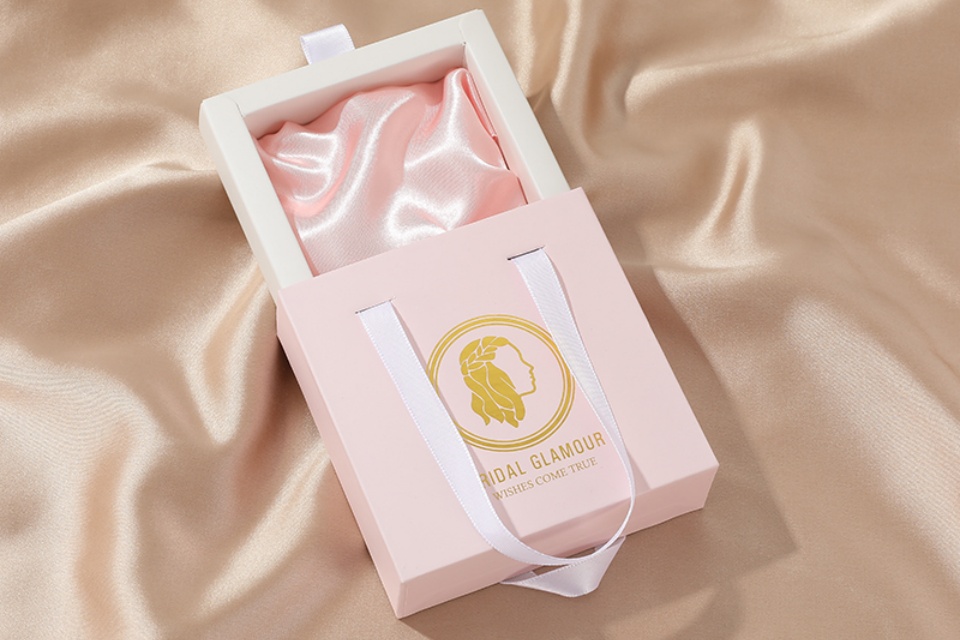
Materials Used
Jewelry boxes are crafted from a diverse range of materials, each contributing unique characteristics to the overall design and functionality. The choice of materials often reflects a balance between aesthetic appeal, durability, and practicality.
Traditional Materials
Wood
Wood has long been a favored material for jewelry boxes, providing a classic look and sturdy construction. Varieties such as mahogany, oak, and cherry are commonly used due to their beauty and resilience. Wooden jewelry boxes often feature intricate carvings and finishes that enhance their elegance.
Leather
Luxurious leather is frequently utilized to cover or line jewelry boxes, imparting a sophisticated and upscale appearance. It is often paired with wood or metal to create stylish, functional designs that protect the jewelry inside.
Metal
Steel and Aluminum
Contemporary jewelry boxes often incorporate metals like steel and aluminum, which are valued for their lightweight yet durable properties. These materials can be finished with various coatings to prevent tarnishing, making them suitable for modern designs.
Brass and Copper
Brass and copper are commonly found in vintage or antique-style jewelry boxes. They develop a natural patina over time, enhancing their charm and appeal.
Fabric-Lined Interiors
Metal jewelry boxes often feature fabric-lined interiors or additional padding to protect delicate pieces from scratches and damage, merging functionality with style.
Glass
Clear Glass
Glass jewelry boxes are renowned for their elegant and delicate appearance, making them ideal for displaying jewelry. Clear glass provides a modern look and allows the contents to be viewed without opening the box.
Stained or Colored Glass
Stained or colored glass adds a decorative touch, often handcrafted with intricate designs. These boxes serve as accent pieces in home decor while showcasing the jewelry within.
Plastics and Acrylic
Versatile Plastics
The introduction of plastics has revolutionized jewelry box design. Plastics can be molded into various shapes, sizes, and finishes, making them both functional and visually appealing. Acrylic, in particular, offers a near-glass aesthetic while being lightweight and durable.
Environmental Considerations
Many modern plastic jewelry boxes are designed with eco-friendliness in mind, utilizing recycled or plant-based materials. This shift caters to the growing consumer demand for sustainable products.
Aesthetic Flexibility
Plastics and acrylics allow for creative designs that blend function and beauty, enabling manufacturers to produce stylish and cost-effective jewelry storage solutions.
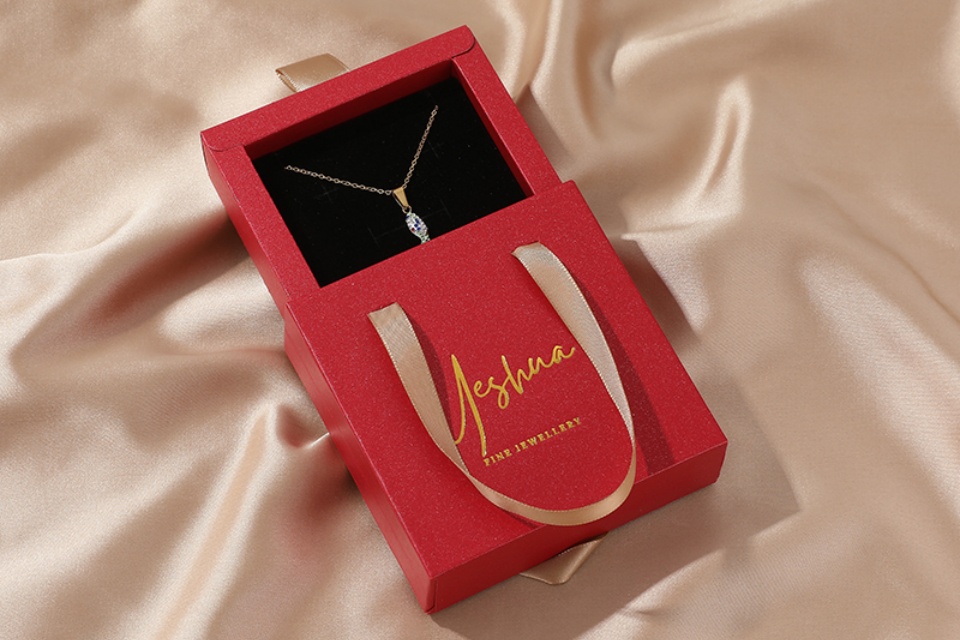
DIY and Customization
Sustainable DIY Jewelry Box Projects
Creating jewelry boxes from recycled materials has gained popularity, emphasizing sustainability and creativity. One innovative approach involves crafting a jewelry box from recycled cardboard, lined with biodegradable velvet. This design can include a seed-embedded insert that customers can plant to grow wildflowers, reinforcing the commitment to eco-friendliness while providing a unique unboxing experience that features a QR code linking to a digital story about the brand’s sustainable sourcing process.
Transforming Old Jewelry Boxes
Old jewelry boxes can be transformed into fashionable and functional pieces through creative DIY projects. Experts showcase before and after examples that highlight how a simple carton can become a chic velvet display. By incorporating mixed media, such as spray paint and tea-stained wood, these transformations demonstrate how minimal changes can yield eye-catching upgrades. Techniques like stenciling and adding beads can turn forgotten boxes into eco-friendly treasures, combining recycling methods with vintage finds.
Personalization in Custom Jewelry Packaging
Personalization remains a key trend in Custom Jewelry Packaging, enhancing the unboxing experience for customers. Customization options such as logo branding, engraved initials, or meaningful dates can add a bespoke touch to packaging. Brands are also utilizing handwritten notes to foster a warm, personal connection with customers. For instance, a sliding lid jewelry box can be customized with a short personal message and accompanied by branded tissue paper or ribbons, elevating the overall experience.
Tech-Infused Customization
In 2025, technology is set to revolutionize the way jewelry packaging is customized. Brands are integrating digital elements such as augmented reality (AR) into their packaging designs, allowing customers to engage with the product in new and exciting ways. AR-enabled packaging enables customers to scan a QR code or use an app to access virtual try-ons, styling tips, or videos showcasing the craftsmanship behind the jewelry. This fusion of technology and personalization not only enhances the unboxing experience but also appeals to tech-savvy consumers looking for interactive features.
Unique and Novelty Packaging Concepts
Innovative packaging designs can also create memorable unboxing experiences. For instance, a unique approach involves embedding a piece of jewelry within a candle, making the act of burning the candle a part of the jewelry discovery process. Such playful designs not only surprise customers but also offer a new perspective on jewelry presentation. The combination of imaginative concepts and personalized touches can greatly enhance the allure of jewelry boxes, making them not only storage solutions but also delightful gifts.
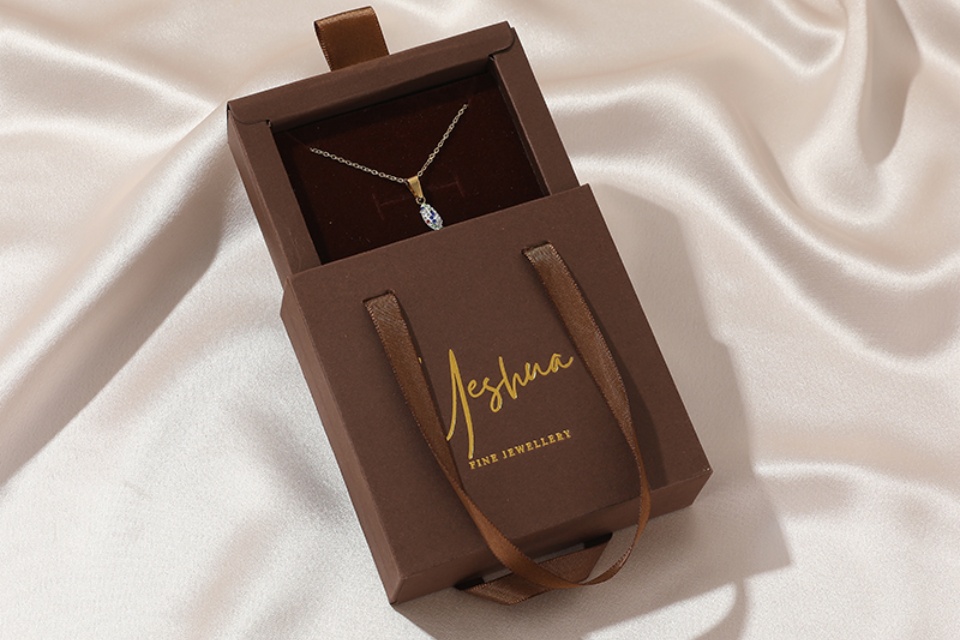
Care and Maintenance
Maintaining vintage and antique jewelry boxes requires careful handling and specific cleaning methods to preserve their beauty and functionality.
Handling Vintage and Antique Jewelry Boxes
When handling vintage and antique jewelry boxes, it is crucial to use gentle and careful movements to avoid damaging delicate materials and components. Undue pressure on hinges, clasps, or handles should be avoided, as these parts are often fragile and prone to breakage.
Cleaning
To clean jewelry boxes, a soft, dry cloth should be used to wipe away dust and dirt. For stubborn stains, the cloth can be dampened with a mild soap solution for gentle cleaning. It is important to steer clear of harsh chemicals or abrasive cleaners, which can damage the delicate finishes of vintage jewelry boxes.
Polishing
For metal jewelry boxes made of materials like silver or brass, a specialized metal polish can restore shine and luster. When polishing, it is essential to follow the manufacturer’s instructions closely and use a soft cloth to apply the polish. Wooden jewelry boxes benefit from high-quality wood polish or wax to nourish and protect their surfaces.
Storage
Proper storage is essential to preserve the integrity of vintage and antique jewelry boxes. They should be kept in a cool, dry place, away from direct sunlight and moisture. It is advisable to avoid placing heavy objects on top of the boxes to prevent damage to their delicate materials and finishes. Lining the storage area with acid-free tissue paper can also protect the boxes from scratches and abrasions.
Professional Restoration
In cases where a vintage or antique jewelry box requires extensive restoration, consulting a professional restorer or conservator is recommended. These experts possess the necessary skills and specialized tools to repair and restore damaged jewelry boxes while maintaining their original beauty and integrity. By adhering to these care and maintenance tips, owners can ensure that their cherished heirlooms remain beautiful and valued for generations to come.
